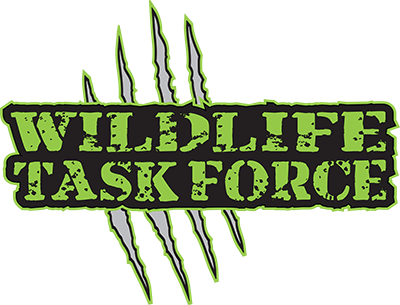SNAKES
Snake Removal
Wildlife Task Force
specializes in the removal of any Florida's native and non-native snakes.
Trained To Handle Any Snake
There are a wide variety of snakes in Southwest Florida, from the harmless black racer to the deadly Eastern Diamond Back Rattlesnake. All employees at Wildlife Task Force are trained to handle any snake in any situation.
Remember! If a venomous snake ever bites you, immediately call 911!
Have You Run Into a Common Blacker Racer Snake?
One of the most common types of snakes that you might encounter in Southwest Florida will most likely be the Common Black Racer. These snakes are non-venomous but can still deliver a nasty bite if cornered.
What's The Most Common Venomous Snake in Our Area?
Although encounters with venomous snakes are rare, it can happen anywhere at any time! The most common venomous snake found in South Florida is the Cottonmouth or Water Moccasin. These snakes are extremely aggressive and very lethal. Most fatal encounters with this snake are found near waterways or ponds, where the victim may be in a secluded location, and emergency care is too far away.
What Should You Do When You Encounter a Snake?
Most snake bites occur when people attempt to capture, kill, handle, or accidentally step on a resting snake.
Whenever you come across a snake in your home, backyard, garden, or flower areas, please do not attempt to capture or kill the snake yourself! It's always best to let the experts at Wildlife Task Force handle your snake encounter of any kind.
Here are a few simple tips to avoid a snake bite:
• Never Attempt to or capture a wild snake
• Always wear closed-toe shoes or boots when enjoying the outdoors
• Teach your children and family members to avoid all snakes if possible
• Learn to identify the venomous snakes in your area or in places that you may be soon to visit.
• Always keep our number handy if you should need assistance with any snake! (855) FL-VENOM.
• Always wear closed-toe shoes or boots when enjoying the outdoors
• Teach your children and family members to avoid all snakes if possible
• Learn to identify the venomous snakes in your area or in places that you may be soon to visit.
• Always keep our number handy if you should need assistance with any snake! (855) FL-VENOM.
Here are some photographs and information on a few of the most common venomous and non-venomous snakes in South Florida:
Common Black Racer:
• These snakes can be found just about everywhere outdoors, including flower beds, gardens, thick bushes and hedges, pool decks, crawlspaces and patios.
• They mostly eat frogs, lizards, and insects.
• These snakes are the most common home invaders because they love to slither in open lanai doors and screen porches. These snakes are non-venomous, but when cornered, they can leave a nasty bite that could lead to severe infection if untreated.
• Baby Black Racers have a body pattern that resembles the pygmy or diamondback rattlesnakes to trick predators, including humans, into thinking that they are dangerous!
• Always Remember (855) FL-VENOM!
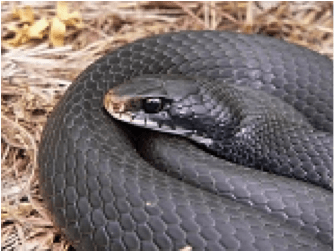
Slide title
Write your caption hereButton
Slide title
Write your caption hereButton
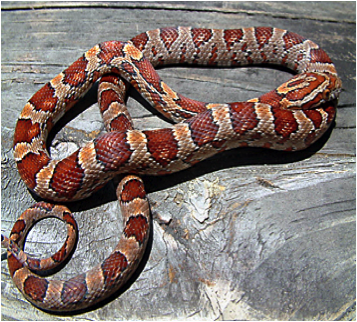
Slide title
Write your caption hereButton
Red Rat Snake or Corn Snake:
• These snakes are also commonly found in flowerbeds, gardens, pool areas, thick bushes, and hedges and believe it or not Attic Spaces!
• These snakes are excellent climbers and are known to climb trees in search of food and climb houses into an attic space in search of mice and rodents.
• These snakes are often found in garages and homes, as they like to enter open garage doors and sliding glass doors.
• They are non-venomous, and even though they are one of the more docile snakes, they will still deliver a nasty bite that is prone to infection.
Yellow Rat Snakes:
• These snakes are very similar to the red rat snake, but the most signifying difference is their markings and color patterns on their bodies.
• These snakes are also excellent climbers and very agile when it comes to tracking their prey in high altitude scenarios, where most snakes fall short.
• These snakes are also commonly found in flowerbeds, gardens, barns, crawlspaces, trees, and bushes and in attic spaces.
• They primarily eat rodents and lizards, but have been known to steal baby chickens and birds!
They are also non-venomous and docile but can still deliver a memorable bite if provoked!
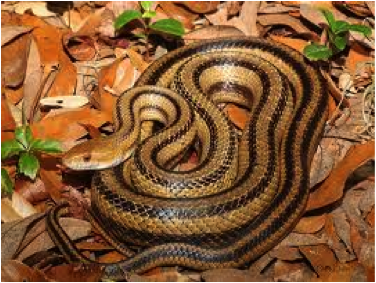
Slide title
Write your caption hereButton
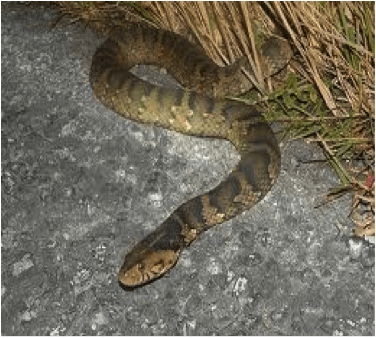
Slide title
Write your caption hereButton
Florida Banded Water Snake:
• Banded water snakes can be found in nearly all freshwater habitats, including ponds, lakes, streams, rivers, wetlands, swamps, and marshes.
• Banded water snakes are commonly seen in the vicinity of many aquatic habitats and are active both day and night.
• They primarily hunt in and around water for fish and frogs
• These snakes are commonly mistaken for the Water Moccasin. However, they are non-venomous, but a bite from this snake can lead to severe infections, as they carry a significant presence of bacteria in their mouths.
Water Moccasin or Cottonmouth:
• Cottonmouths are venomous semi-aquatic snakes often referred to as "water moccasins."
• They can be found in nearly all freshwater habitats but are most common in golf courses and densely vegetated wetlands.
• Cottonmouths will eat a variety of aquatic prey, including frogs, lizards, snakes (including smaller cottonmouths), little turtles, baby alligators, mammals, birds, and especially fish.
• The cottonmouth got its name because of the bright white lining inside of its mouth that is normally seen when they are threatened.
• Unlike most other snakes, these snakes do not flee when threatened; they will stand their ground and become very aggressive!
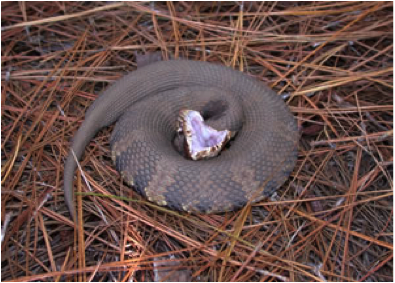
Slide title
Write your caption hereButton
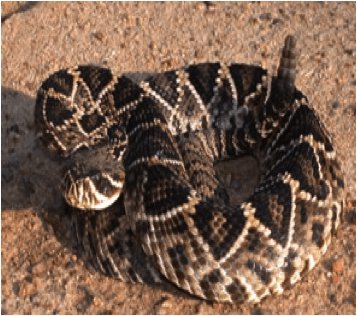
Slide title
Write your caption hereButton
Eastern Diamondback Rattlesnake:
• This snake is the largest and most dangerous snake in the U.S.
• They primarily live in palmetto thickets or other thick vegetation
• Their primary food source is rabbits and rodents
• They can grow between 4-6ft long and have segmented rattles at the end of their tail.
• They do not always rattle before striking and are ambush predators
• Any encounter with this snake can be fatal, as a single dose of their venom is strong enough to kill 3 or 4 adult humans!
• If you should spot this snake near or around your house, call Wildlife Task Force immediately, as the odds of capturing the snake decrease drastically after the first hour of the initial sighting!
Eastern Coral Snake:
• These snakes are incredibly reclusive and tend to live underground, or in sandy, woody or marshy areas
• A Coral snakes venom is three times more potent than a King Cobra
• Coral snakes generally only bite when handled or startled
• They eat frogs, lizards, and other smaller snakes
• The Coral snake is commonly confused with the Scarlet King Snake
• Remember the rhyme, "Red and Yellow, kill a fellow and Red and Black, a friend of Jack."
The Coral snake always has a black nose.
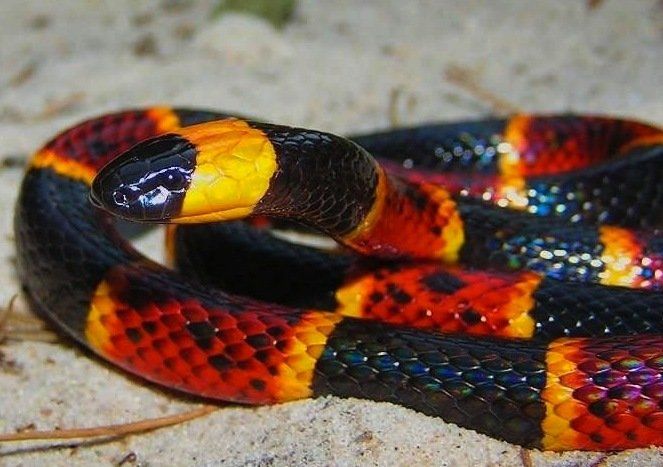
Slide title
Write your caption hereButton
If you should find a snake in your home, business or out in the yard and you want it safely and humanely removed, contact Wildlife Task Force at (855) FL-VENOM
or simply fill out the contact form on this page.
BUSINESS HOURS
- Mon - Sun
- Open 24 Hours
Content, including images, displayed on this website is protected by copyright laws. Downloading, republication, retransmission or reproduction of content on this website is strictly prohibited. Terms of Use
| Privacy Policy
